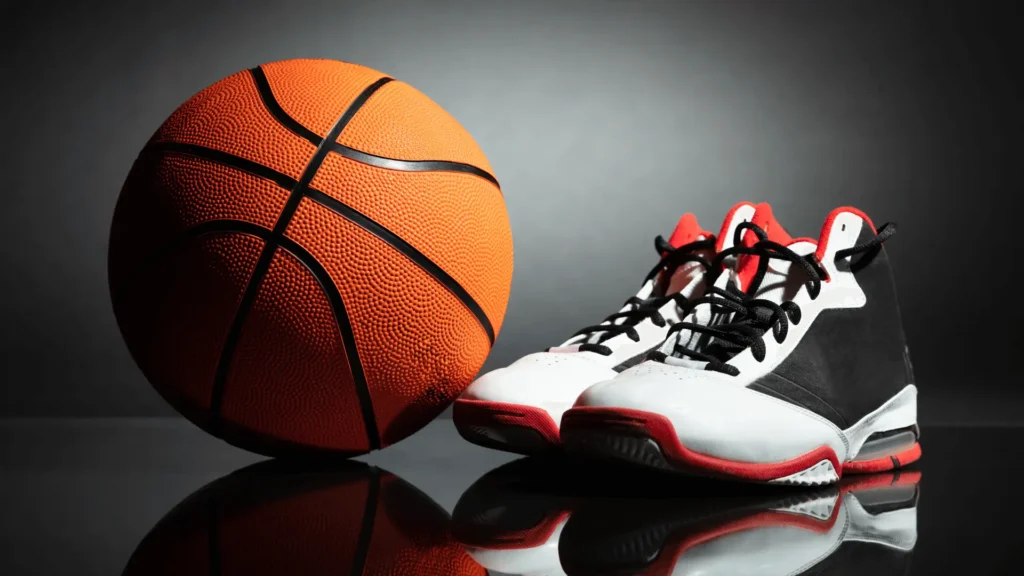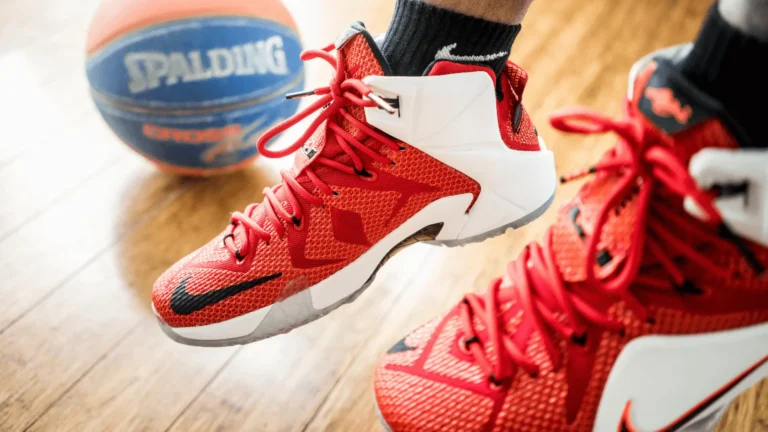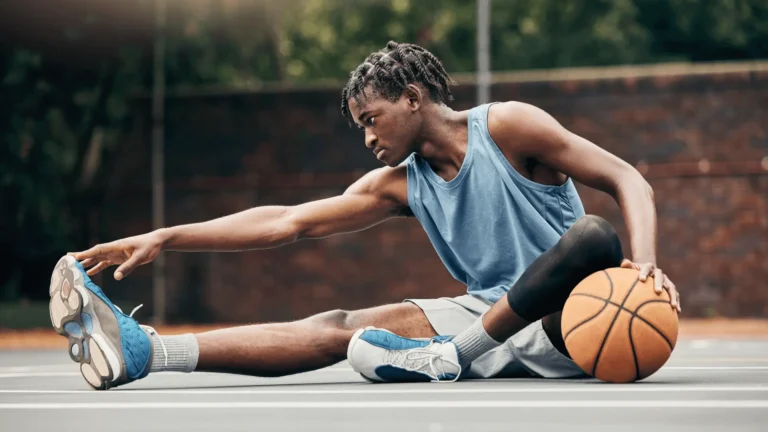Why Are Basketball Shoes So Heavy? Quick Guide
Basketball shoes have come a long way since their inception in the early 1900s. From humble beginnings as simple canvas sneakers, they have evolved into high-tech, performance-enhancing footwear designed to help players perform at their best on the court. However, one thing that many basketball enthusiasts can’t help but notice is how heavy these shoes can be!
In this blog post, we’ll take a closer look at why are basketball shoes so heavy and explore what impact this has on players’ performance. We’ll also provide some tips on how to choose the right pair of basketball shoes for your needs. So if you’re ready to dive into the world of basketball shoe technology and find out what makes them tick (or weigh), then read on!
Why are Basketball Shoes so Heavy?

Basketball shoes are heavy due to the materials used in their construction. These materials include rubber, leather or synthetic leather, foam cushioning, and various other components that make up the shoe’s structure. The sole of the shoe is particularly important as it provides traction on the court and helps prevent slips and falls.
In addition to these structural features, basketball shoes also tend to be heavier because they offer more support than regular athletic shoes. This extra support can help players avoid injuries such as sprained ankles or knee problems by stabilizing their feet during sudden movements on the court.
However, some players argue that heavy shoes can actually hinder their performance. For example, a player who relies heavily on speed might find that a bulky shoe slows them down or makes them feel weighed down while running.
Ultimately, when choosing basketball shoes it’s important to consider your own playing style and individual needs. Some players may prefer lightweight options for quicker movement around the court while others may prioritize stability over weight reduction. It all comes down to finding what works best for you!
The Materials of Basketball Shoes
The materials used to construct basketball shoes play a significant role in their weight. Most basketball shoes are made of multiple layers of synthetic or natural materials, which can add up quickly.
| Material | Description |
|---|---|
| Leather | Natural material that is durable and provides excellent support and stability. |
| Synthetic Leather | Artificial material that looks and feels like leather, but is often lighter and more breathable. |
| Mesh | Lightweight and breathable material that is often used in the upper portion of basketball shoes. |
| Flyknit | A type of mesh material that is woven into a single piece and conforms to the foot for a custom fit. |
| Foam | Soft and cushioning material that is often used in the midsole of basketball shoes. |
| Rubber | Durable material that is often used in the outsole of basketball shoes for traction and grip on the court. |
| Phylon | Lightweight and cushioning material that is often used in the midsole of basketball shoes. |
| EVA | Lightweight and cushioning material that is often used in the midsole of basketball shoes. |
| TPU | Thermoplastic material that is often used in the midsole or upper portion of basketball shoes for added support and stability. |
How Basketball Shoes Affect Performance
Basketball is a sport that requires agility, quick movements, and sudden changes in direction. The shoes that basketball players wear can significantly affect their performance on the court. A good pair of basketball shoes must provide support, stability, and comfort to the player’s feet.
The design of basketball shoes has evolved over time to meet the needs of players on the court. Today’s basketball shoes are equipped with better cushioning systems such as air or gel soles for impact absorption during jumps and landings. They also have high tops that provide ankle support while making abrupt turns or stopping suddenly.
Another important aspect is traction, which helps a player keep his grip on the hardwood floors when running at high speeds or changing directions quickly. Basketball shoes have rubber soles with deep grooves designed to increase traction by providing more contact with the playing surface.
In addition to these features, modern-day basketball shoe brands offer various customization options such as customized fit through lacing systems or personalized colors that allow for individual expression while playing ball.
How to Choose the Right Basketball Shoe for You
Choosing the right basketball shoe can significantly impact your game. With so many options on the market, it’s essential to know what to look for when selecting a pair of basketball shoes.
First and foremost, consider your playing style. If you’re a guard who relies on speed and agility, you’ll want a lightweight shoe with excellent traction. Forwards and centers may benefit from shoes that provide more support and cushioning for jumping and landing.
Next, think about the fit. Your basketball shoes should fit snugly but not be too tight or uncomfortable. Make sure there is enough room in the toe box for movement without sliding around inside the shoe.
Consider also the materials used in making the shoe. Leather provides durability but may be heavier than synthetic materials like mesh or knit fabric which often offer better breathability.
Why Some Players Prefer Lightweight Shoes
One reason why some basketball players prefer lightweight shoes is because they prioritize speed and agility over protection and support. Lighter shoes allow for quicker movements on the court, making it easier to change direction or leap towards the basket.
Another reason is that lighter shoes can reduce fatigue during long games or practices. Heavy shoes can weigh down a player’s feet, causing them to tire out more quickly. Lightweight shoes are designed with breathable materials that help keep feet cool and dry which also helps in reducing fatigue.
Some players may also have pre-existing foot conditions that require them to wear lighter footwear for comfort reasons. For example, those who suffer from plantar fasciitis often benefit from wearing lightweight shoes with good arch support.
The choice between a heavy or lightweight shoe ultimately comes down to personal preference and individual playing style. It’s important for every player to try on different types of basketball shoes before making a final decision based on their own unique needs and preferences.
Conclusion
Basketball shoes are heavy for a reason. The materials used to make them provide the necessary support and cushioning needed for intense games and practices. While some players prefer lightweight shoes, others prioritize durability and overall performance.
When choosing a basketball shoe, it’s important to consider your specific needs as a player. Make sure the shoe fits well, provides enough support in key areas like the ankle and heel, and has appropriate traction on the sole.
Remember that investing in quality basketball shoes can improve your game and reduce your risk of injury. So take the time to find the right pair for you – your feet (and game) will thank you!
Also Read: How Long are Basketball Shoe Laces? A Detail Guide

Hi there, my name is Aditya and I am a runner, NASAM certified coach, and a fitness and nutrition enthusiast. Running has been my passion for as long as I can remember, and I am truly grateful that I get to pursue it every day. When I’m not coaching or running, you can often find me admiring my collection of running shoes. My love for shoes started at a young age, and I have since grown a collection that I am proud of.





